For the Lives column, Suzy Halajian views Lebanon through Like the delayed rays of a star, a 2021 book by Heather M. O’Brien—where photographs mark time as well as crises, and life burns on.
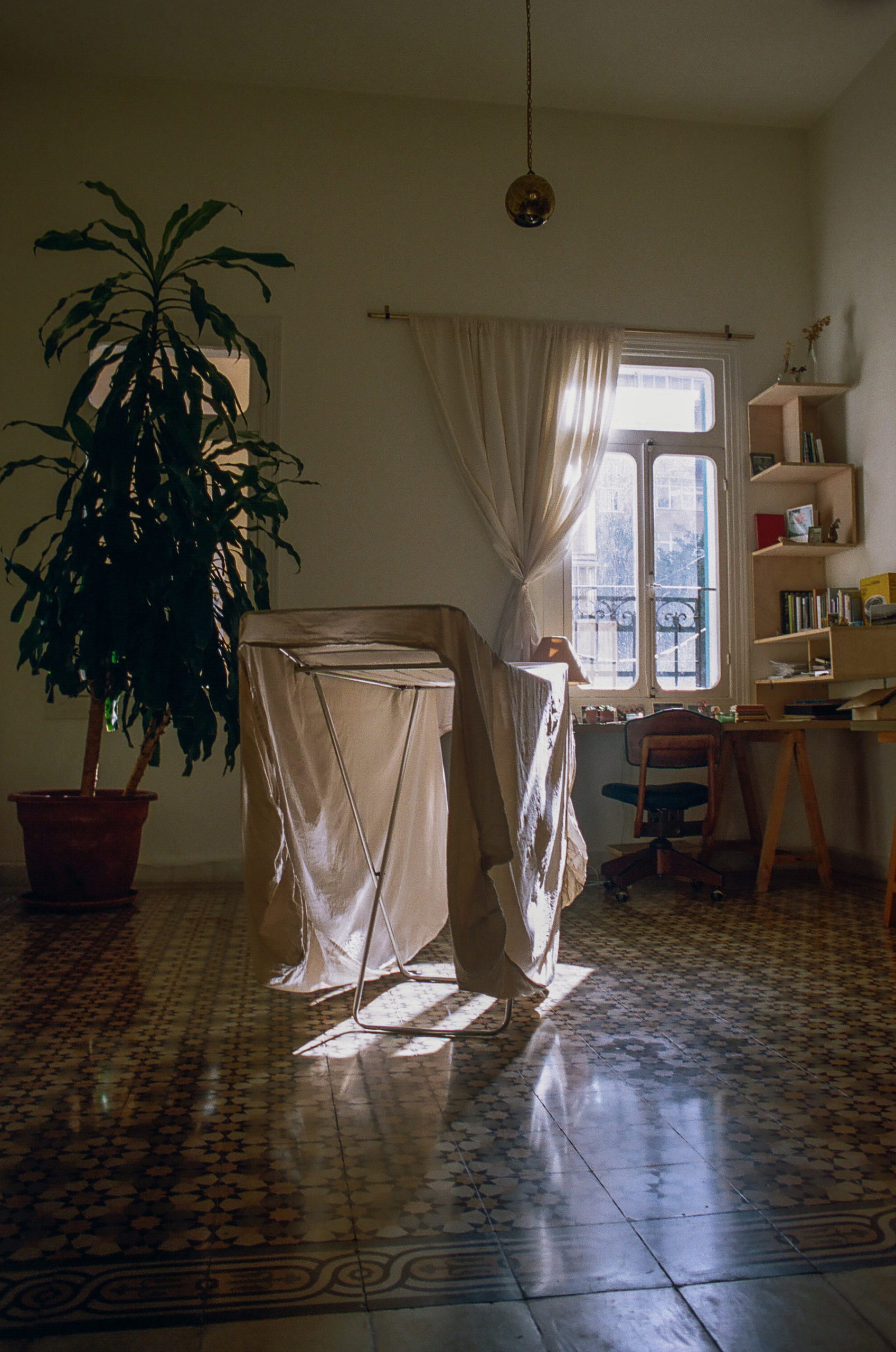
Heather M. O’Brien, Like the delayed rays of a star (Plate 36), 2021. Digital chromogenic print. Courtesy of the artist.
In The Atlas Group’s short video from 2002, I only wish that I could weep, a Lebanese Army intelligence officer known only as Operator #17 documents the sunset on the Corniche, Beirut’s well-known seaside boardwalk. Captivated by the beauty of the sun setting behind the sea’s horizon, Operator #17 neglects his assigned target and is dismissed. The recording, allegedly a surveillance tape donated to the fictional collective created by artist Walid Raad, narrates the officer’s story over the footage he was able to keep.
By blurring fact and fiction, Raad echoes the sense of historical confusion in Lebanon. His documentary-based, multimedia artworks bring together the violent realities of the country’s prolonged civil war (1975–1991) and its postwar conditions, while illuminating its alluring social and physical landscape. His way of accounting for ongoing precarity and conflict through the archive urges us closer to understanding a place shaped by unstable history, showing that our individual and collective imagination around place can also shift.
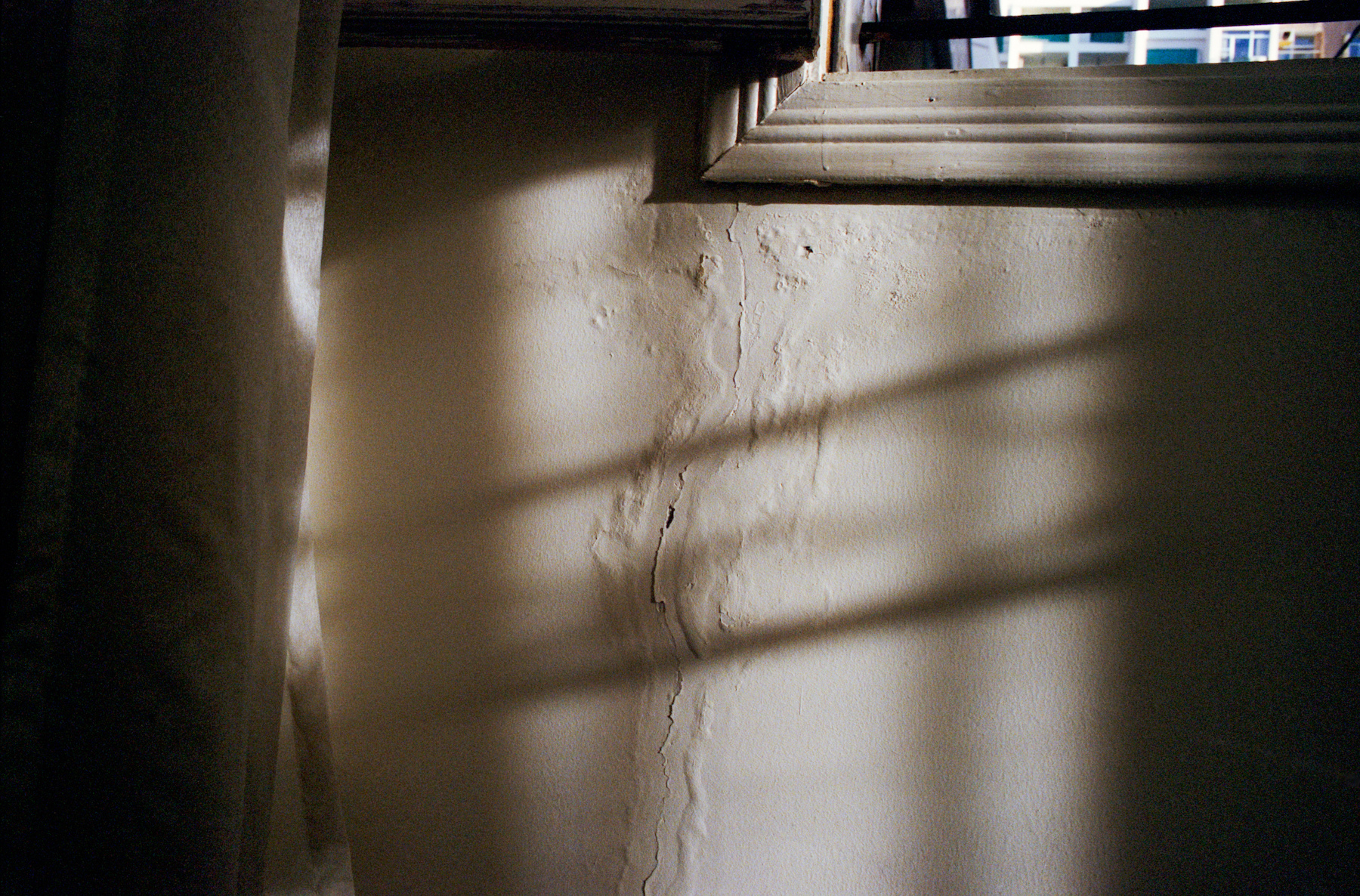
Heather M. O’Brien, Like the delayed rays of a star (Plate 17), 2021. Digital chromogenic print. Courtesy of the artist.
The American artist and filmmaker Heather M. O’Brien relocated to Beirut with her partner for a teaching job in early 2016. She moved into a beautiful, traditional Ottoman-era flat in Ras Beirut with colorful stained-glass windows and mosaic tiles on the floors, which also doubled as her studio. Four years later, she left Lebanon for a new teaching position in Illinois. Her book of photography, Like the delayed rays of a star, 2021, is a record of her time there.
Political movements and disasters heavily influenced O’Brien’s time in Lebanon: the artist arrived just after the waste crisis of 2015, witnessed the massive protests that began on October 17, 2019, and experienced the country’s dire economic collapse—as well as the global coronavirus pandemic and ensuing health emergency. Her first child was born on August 4, 2020, the tragic day of Beirut’s port explosion, which was caused by a massive amount of improperly stored ammonium nitrate. The blast devastated the lives of hundreds of thousands, left the port area in ruins, and covered the city in broken glass.
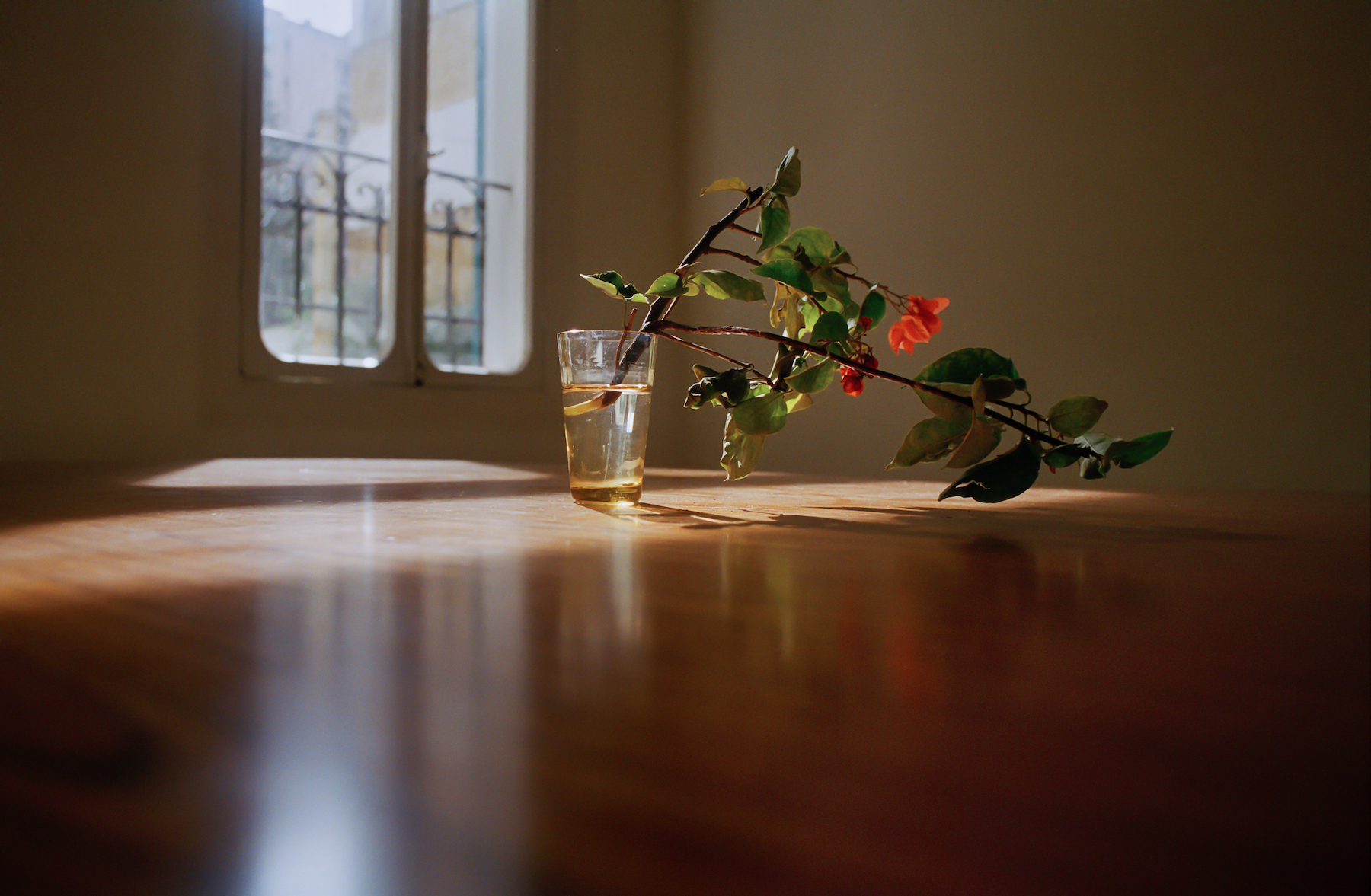
Heather M. O’Brien, Like the delayed rays of a star (Plate 23), 2021. Digital chromogenic print. Courtesy of the artist.
The photographs in the book meditate on O’Brien’s private life in Lebanon. The artist had been familiar with the city primarily through images and media sources stemming from the Bush and Clinton era, as well a post-9/11 reality, which conditioned her to fear the Middle East. These narratives were soon debunked as she settled and gained an understanding of the complexities of her new home. Her delicate experiments with natural light, shadow, accident, and repetition explore place and narrative in photographs, while prompting questions of belonging, place-making, and ways of marking the passage of time. Over the years, as she adjusted to a charged city and sought respite from its chaos and demands, O’Brien documented objects in her domestic space that often feel semi-staged: plants and flowers, unmade beds, cracks in the walls, wires and cords, stairways, the exteriors of buildings, notes and photographs, vases and smoke.
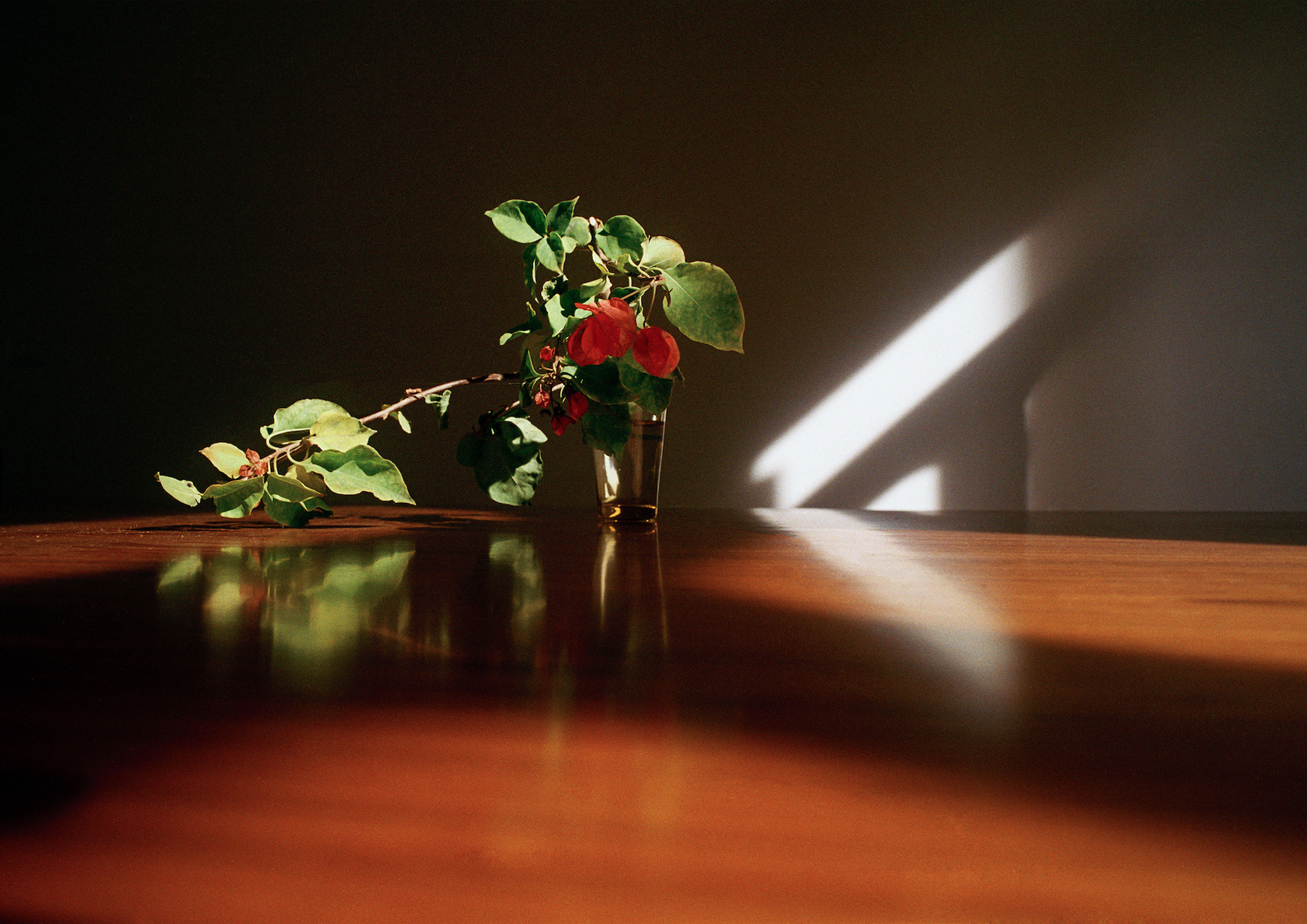
Heather M. O’Brien, Like the delayed rays of a star (Plate 18), 2021. Digital chromogenic print. Courtesy of the artist.
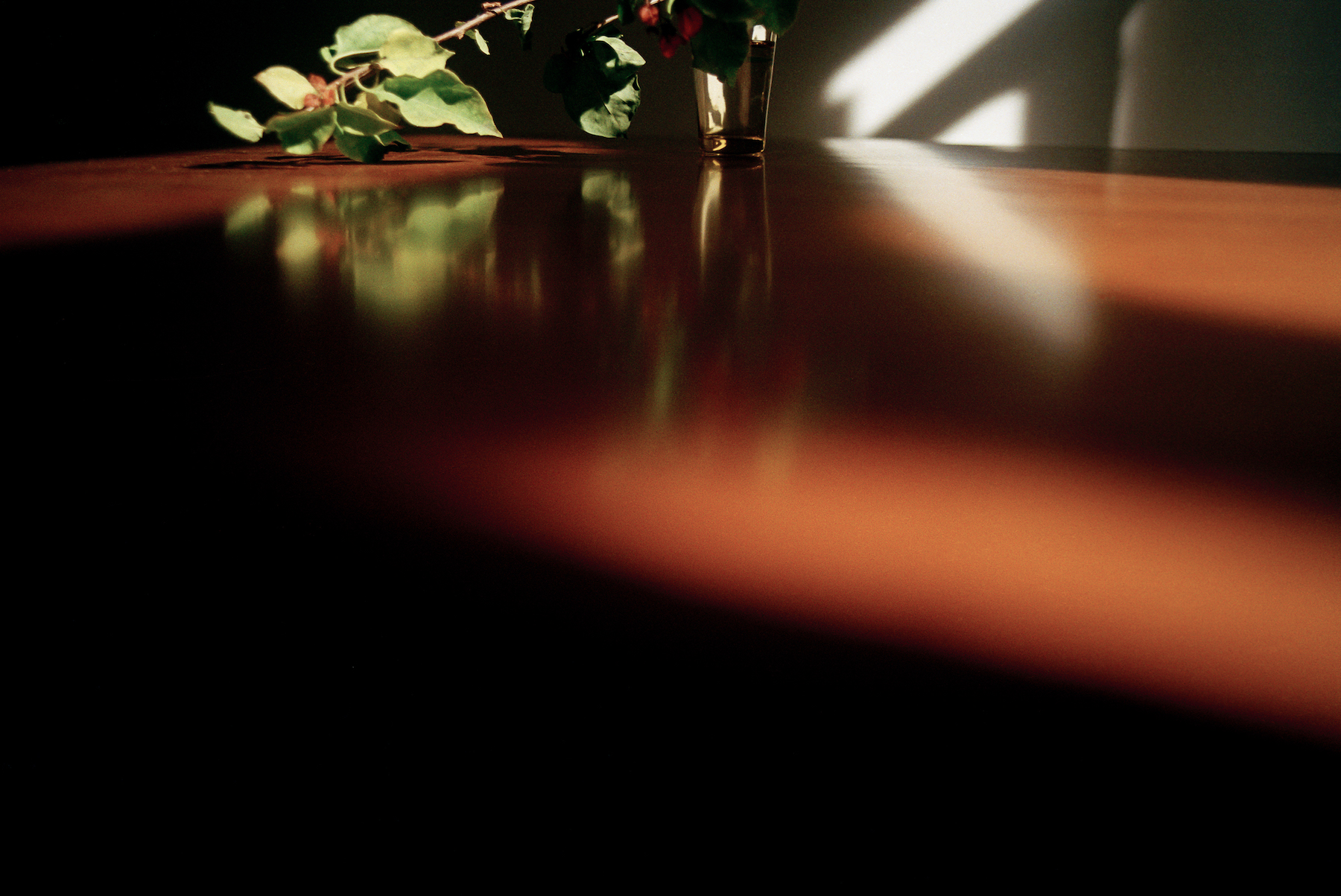
Heather M. O’Brien, Like the delayed rays of a star (Plate 20), 2021. Digital chromogenic print. Courtesy of the artist.
A series of shots of a dramatically lit red flower with vibrant green leaves in a clear glass of water, elegantly captured from different angles and laid out in varying sizes and positions on the page, marks O’Brien’s present. The repetition of the image highlights the delicacy of the flower, alluding to its impending wilting, while offering shifting perspectives through repeat encounters in the meantime. It suggests that we might examine the same object in unexpected ways, guided by the severity of shadows.
Other images show the broken wings of dead butterflies, brown, black, and white parts found on the balcony and laid out on the artist’s desk, saturated by sunlight. The shadows cast in the image emphasize the stain on the desk’s surface. Although these photographs do not explicitly name moments of heightened crises, in Lebanon or globally, O’Brien’s timeline reveals that they were made in March 2020 as the pandemic reorganized Lebanon’s landscape, forcing the country to shut down its borders, institutions, and businesses, hinting at the suffering and loss ahead for the country, the globe; and the drastic shifts to come in the artist’s life.
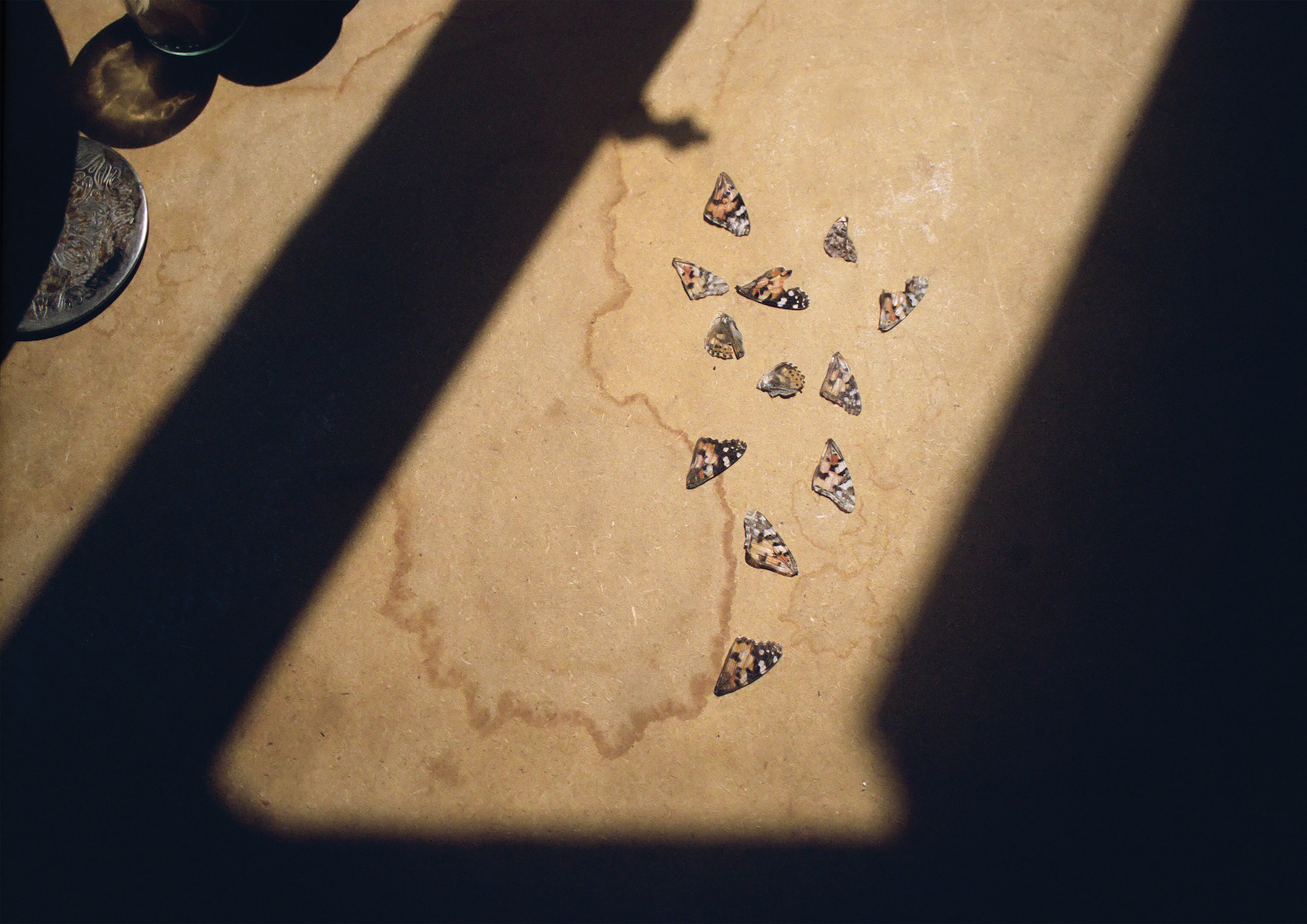
Heather M. O’Brien, Like the delayed rays of a star (Plate 58), 2021. Digital chromogenic print. Courtesy of the artist.
The arresting images O’Brien made of her private world propose how one can understand a place as a stranger to it: they capture the mundane, the everyday, the tender, and the silent. They also point to traditional gender roles and the state of the unseen homemaker—one who looks out from her enclosure as a way of escaping domestic life. For O’Brien, from her position as both professor and artist, the interior provides a place of refuge. Yet the outside world constantly enters her private space: the sunlight presses deep shadows into objects in O’Brien’s home, transforming her possessions into beautiful things, while the powerlines, enmeshed in the country’s state-run electrical grid along with its daily outages and devastating failures, also cast elegant dark lines on her walls. The faded yellowish-beige and the dilapidated state of the concrete buildings captured from her windows and balcony sometimes sit next to vivid greenery, reminders of the closeness of pain and beauty, life and death.
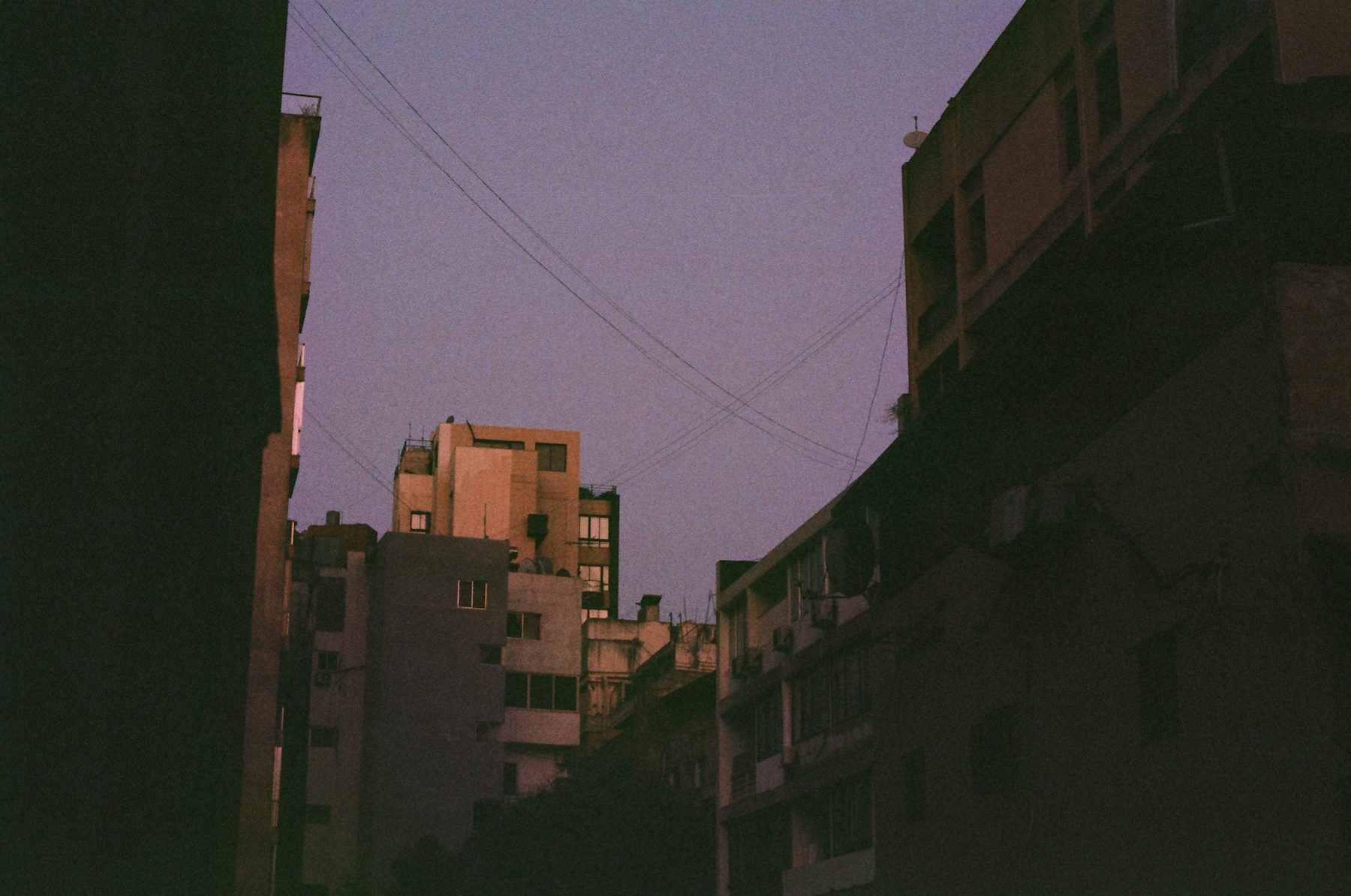
Heather M. O’Brien, Like the delayed rays of a star (Plate 78), 2021. Digital chromogenic print. Courtesy of the artist.
O’Brien’s images convey many temporalities; they chronicle the sentiment of a specific time more than a present moment. In the book, essays, interviews, and anecdotes from the artist’s personal timeline bracket the photographs, engaging the context of Lebanon through historical, theoretical, philosophical, and diaristic reflections. At the same time, her way of engaging politics through a personal lens reflects the varied practices of contemporary Lebanese artists: the generation, of which Raad is a key figure that rose to prominence in the mid-1990s, who used documentation and fiction to explore loss and remembrance amid ongoing unrest. The generation who followed seem less interested in dealing with the specificities of the war than in global issues around surveillance, displacement, and industrialization. O’Brien’s work sits beside Ariella Azoulay’s writing in The Civil Contract of Photography (2008) on the importance of reading photographs as part of an active life: “an ongoing present that challenges the very distinction between contemplation and action.” Azoulay studies how our inability to turn away from violence in the photographic archive affects our civil imagination. With Like the delayed rays of a star, O’Brien speaks to the violence by concentrating on the solace.
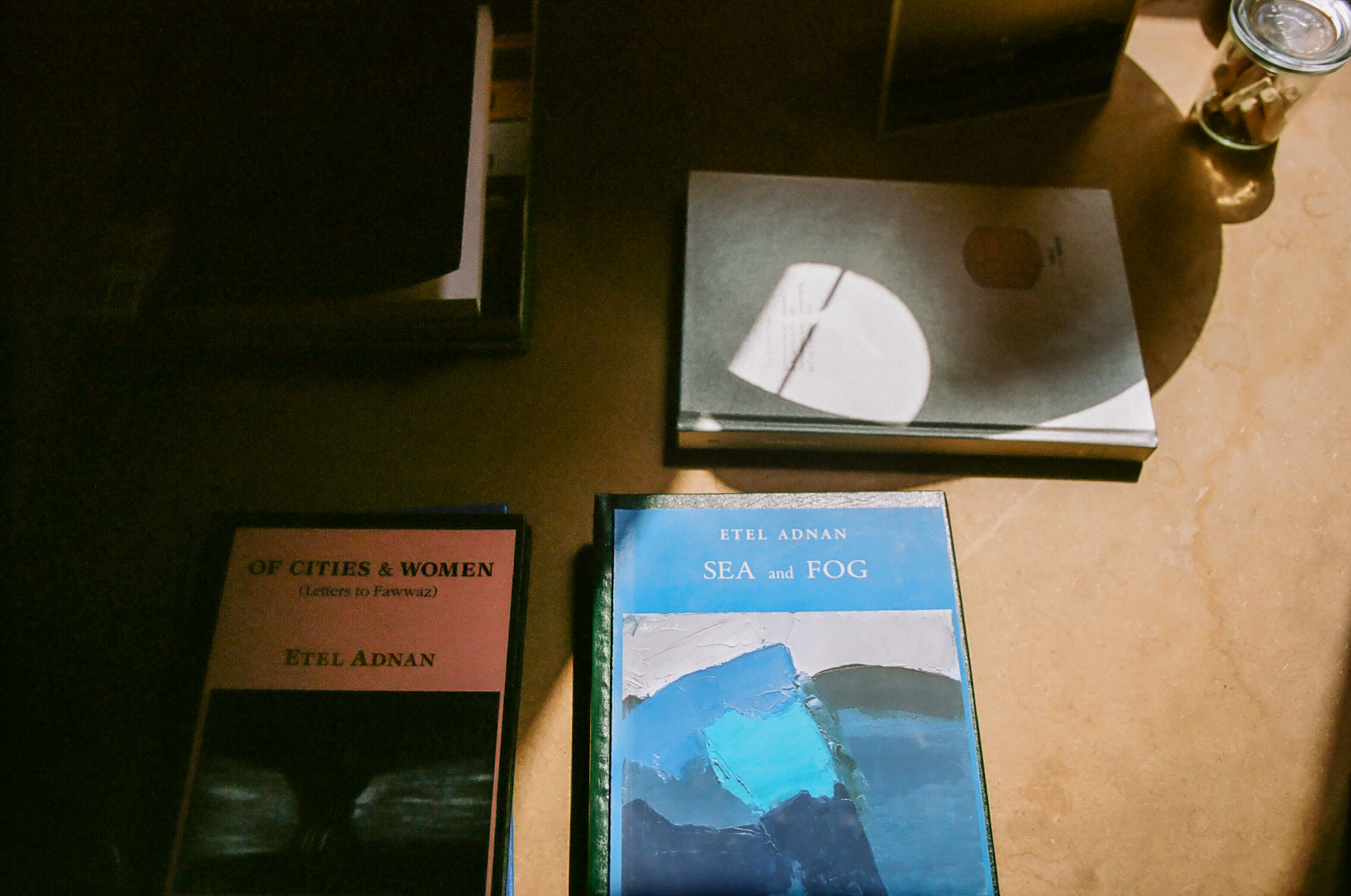
Heather M. O’Brien, Like the delayed rays of a star (Plate 60), 2021. Digital chromogenic print. Courtesy of the artist.
I keep returning to another image: a photograph of the books on the artist’s desk. Here, the light illuminates two of Lebanese-American artist Etel Adnan’s titles, Sea and Fog and Of Cities & Women (Letters to Fawwaz), a book I’ve read many times over. The final letter in the book, written in 1992 in the aftermath of the Civil War, reflects on the difficulty of living in Beirut and the difficulty of leaving it. Of her beloved city, Adnan writes, “Beirut is a good place for meditating on the world’s condition.” Like Raad’s protagonist, who turns to the sun rather than surveil a fellow, O’Brien shifts her gaze toward the elements and light and shadows in order to rethink the complexities of a place, a region, a global situation.
In another prophetic undertaking, Adnan’s The Arab Apocalypse asks us to think of the sun as a witness to human politics. “The radio says History allocated 10 billion years to the sun,” she writes; “the SUN has already lived half its age.” By observing the atrocities committed during the Civil War in the book-length poem, the sun takes on many roles: a metaphor for colonial powers, a symbol for the violent potential of human beings, and a deteriorating, dying body. If we are to pursue Adnan’s logic, the nonhuman light of a failing star both witnesses and collaborates in our suffering. Neither humanity nor its star are assuaged. Violence interlaces with beauty, and beauty with the potential of violence. x

Suzy Halajian is a curator and writer based in Los Angeles. She is Executive Director and Curator at JOAN. She has curated exhibitions and programs at spaces including Los Angeles Contemporary Exhibitions, ONE Archives at the USC Libraries, The Hammer Museum, and Human Resources, Los Angeles; Oregon Contemporary, Portland; Kunstverein, Amsterdam; UKS, Oslo; and the Sursock Museum, Beirut. Halajian serves on the Programming Committee of Human Resources Los Angeles. She was granted The Andy Warhol Foundation Arts Writers grant for the collaborative journal Georgia and a Curatorial Research Fellowship from the Andy Warhol Foundation for the Visual Arts. Her writing has been published by ArtEast, BOMB, X-TRA, and Ibraaz, among others. Halajian is a PhD candidate in the Film and Digital Media program at the University of California, Santa Cruz.